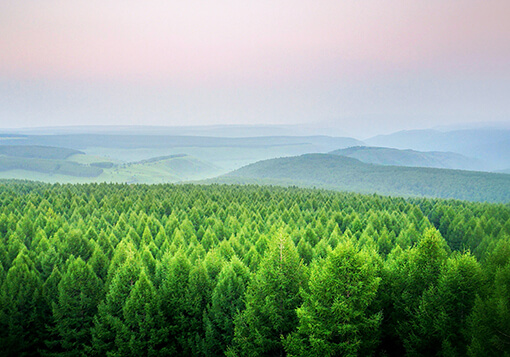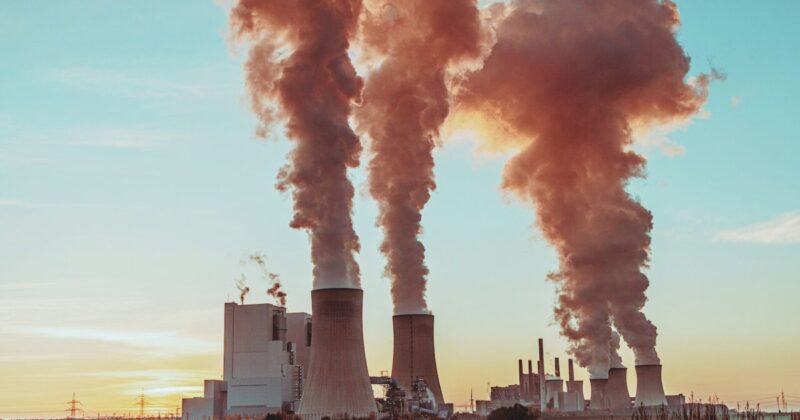Hi! It’s konkaz (@konkazuk).
Whenever we talk about climate change, the term ‘Net Zero‘ almost always comes up.
That’s because global warming is accelerating so rapidly that we’re running out of time to act.
Today, ‘Net Zero’ is no longer just a technical term — it has become a crucial keyword that marks the crossroads of whether humanity can still prevent climate breakdown.
This time, we’re taking a closer look at the meaning of the term, along with the key issues and criticisms surrounding it.
What is “Net Zero”?

In simple terms, ‘Net Zero’ means…
Greenhouse gas emissions – Greenhouse gases removed = 0
This doesn’t mean we’re not allowed to emit greenhouse gases — such as CO₂ — at all. Rather, it means offsetting those emissions so that the total becomes effectively zero.
🔹How Can Net Zero Be Achieved?
Achieving net zero fundamentally involves two key actions.
① Reduce emissions
▪️Transition to renewable energy sources such as solar and wind power
▪️Reduce the use of fossil fuels like coal and gas
▪️Cut down on meat and dairy consumption (to help prevent deforestation for animal feed)
▪️Choose locally produced food (to reduce transport-related emissions)
▪️Replace cars with electric vehicles or bicycles
▪️Don’t waste food
▪️Turn off lights when not in use and use energy-efficient appliances
…and more.
② Offsetting what’s left
▪️Plant trees (they absorb CO₂)
▪️Prevent deforestation
▪️Restore wetlands (they absorb and stabilise CO₂ and methane)
▪️Store carbon dioxide underground (CCS: Carbon Capture and Storage)
▪️Grow seaweed like kelp (it’s highly effective at absorbing CO₂)
▪️Use carbon farming methods to trap carbon in soil
▪️Capture CO₂ in buildings or concrete (a relatively new technology)
…and more
🔹Net Zero vs. Carbon Neutral: What’s the Difference?
When reading about climate change, the term ‘Carbon Neutral‘ often appears alongside ‘Net Zero’. Although they’re sometimes used interchangeably, they’re not exactly the same.
‘Carbon Neutral’ specifically refers to balancing carbon dioxide (CO₂) emissions with CO₂ absorption. In contrast, ‘Net Zero’ applies to all greenhouse gases, including methane and nitrous oxide, and means that total emissions are balanced by total removals across all these gases.
In short…
▫️Carbon Neutral ➡︎ Only applies to CO₂
▫️Net Zero ➡︎ Covers all greenhouse gases
So, you could say that ‘Net Zero’ is the stricter standard.
🔹Target Year for Reaching Net Zero
Since the Paris Agreement, net zero has become a widely adopted international goal, except for some developing nations, and most countries have set 2050 as the target year for achieving it.
Criticism of Net Zero

In today’s competitive society — one that could almost be called pathological — where both corporations and individuals treat “how much you earn” and “what you own” as status symbols, the production of goods almost inevitably results in greenhouse gas emissions.
In a society obsessed with profit and possession, ‘Net Zero’ probably sounds like an annoying restriction to most people and businesses.
Blinded by profit to the point where they can’t even see the existential threat to humanity, big corporations — and the smaller ones trying desperately to keep up — will justify almost anything in the name of making money.
Their attitude is something like…
“If we can offset our emissions later, then it’s fine to emit as much as we want now, right?”
With that kind of mindset, many are simply pretending to make an effort—just to keep up and avoid falling behind their competitors.
🔹What is “Greenwashing”?
When companies only pretend to care about the environment — without making meaningful changes — this behavior is called “greenwashing“.
Here are some examples of greenwashing…
👉 Big oil companies like ExxonMobil (US) and BP (UK) run flashy TV and online ads about their ‘investment in renewables’. But in reality, only a tiny fraction of that investment actually goes to renewable energy, and they remain heavily dependent on fossil fuels.
👉 Many airlines promote ‘carbon neutral tickets’, but the industry as a whole has made little progress in cutting emissions.
👉 UK bank HSBC advertises its commitment to climate action on TV, but continues funding fossil fuel companies—its ads don’t reflect reality.
👉 Coca-Cola pushes ads about ‘recycled materials’ and ‘bottle returns’, yet remains one of the world’s biggest plastic polluters.
👉 Swapping plastic straws for paper ones—while everything else is still plastic.
👉 Calling a product ‘eco-friendly’ just because the packaging is recyclable, even though the product itself hasn’t changed.
👉 Putting self-made “eco” labels on products without any third-party certification.
At the end of the day, the term “net zero” has ended up being used as a marketing tool to boost a company’s image and sell more products, rather than serving its original purpose.

Conversely, if we’re serious about our future and our children’s, we as consumers must start making conscious choices and stop buying from companies that behave this way.
🔹The Problem with Depending Heavily on Carbon Offsets
Offset means “to compensate”, and in the context of net zero, it refers to balancing out emitted greenhouse gases by preserving forests or planting trees.
However, the truth is, relying only on offsets doesn’t reduce real emissions — and it won’t stop climate change from getting worse!!!
Even if we say ‘we’ll reach net zero by 2050’, if we do nothing until 2045 and try to offset everything in the last five years, climate change will have gotten much worse by then.
If we don’t stop relying on offsets and instead set clear goals like “reduce emissions by X% every year” or “cut Z% within five years,” we’re going to be in serious trouble before long.
Let’s all spend more time thinking seriously about climate change.
There’s no time left to waste!
So, that’s it for today’s topic on ‘Net Zero’.
Until next time.
konkaz
*You can read this blog post in Japanese from the link below.
👉 温室効果ガス削減の最前線:ネットゼロの実現可能性

